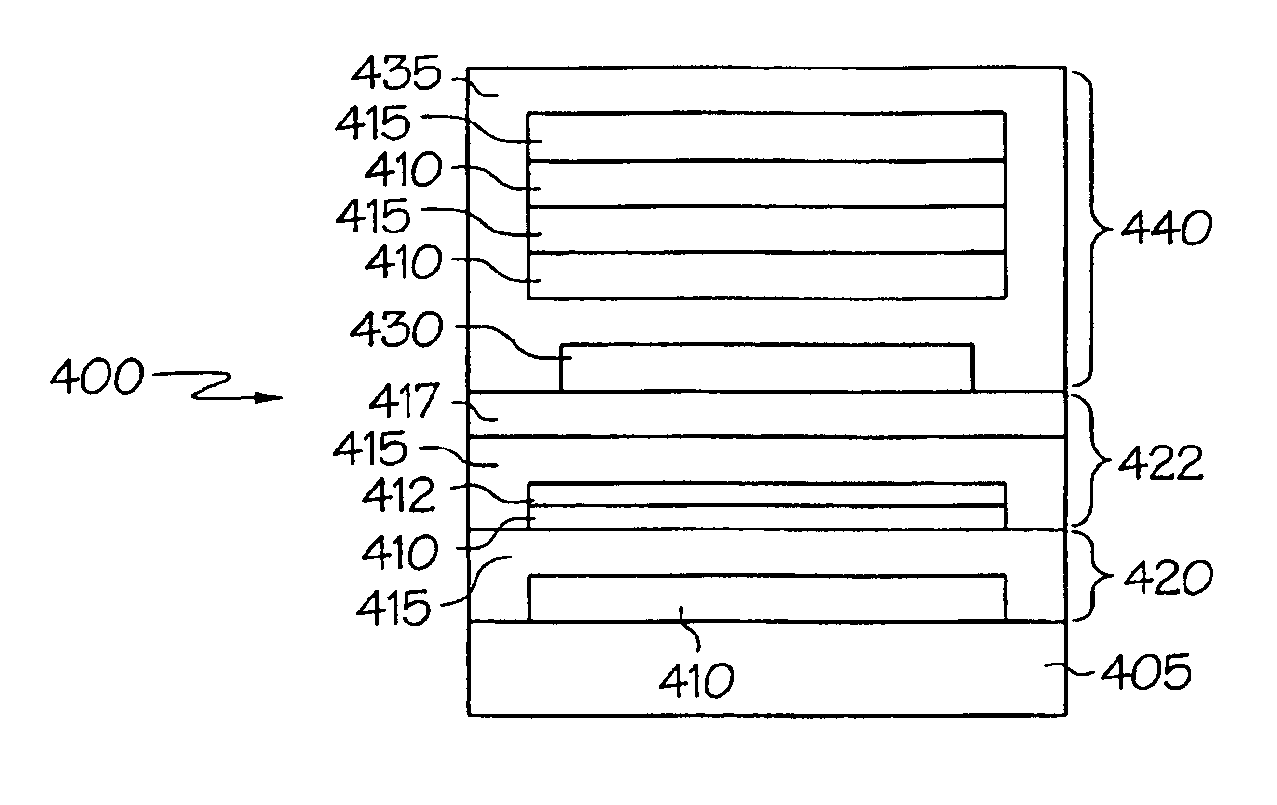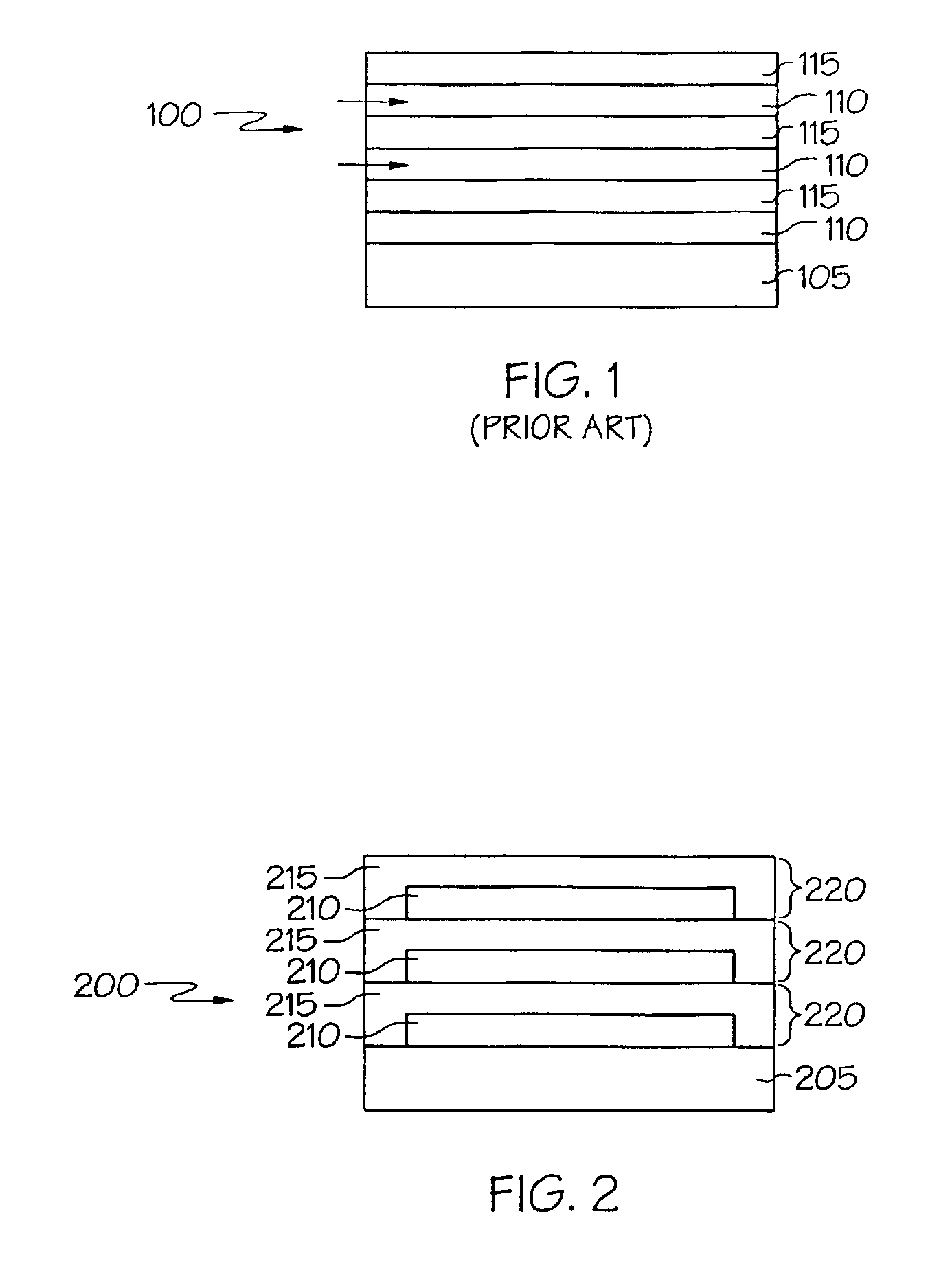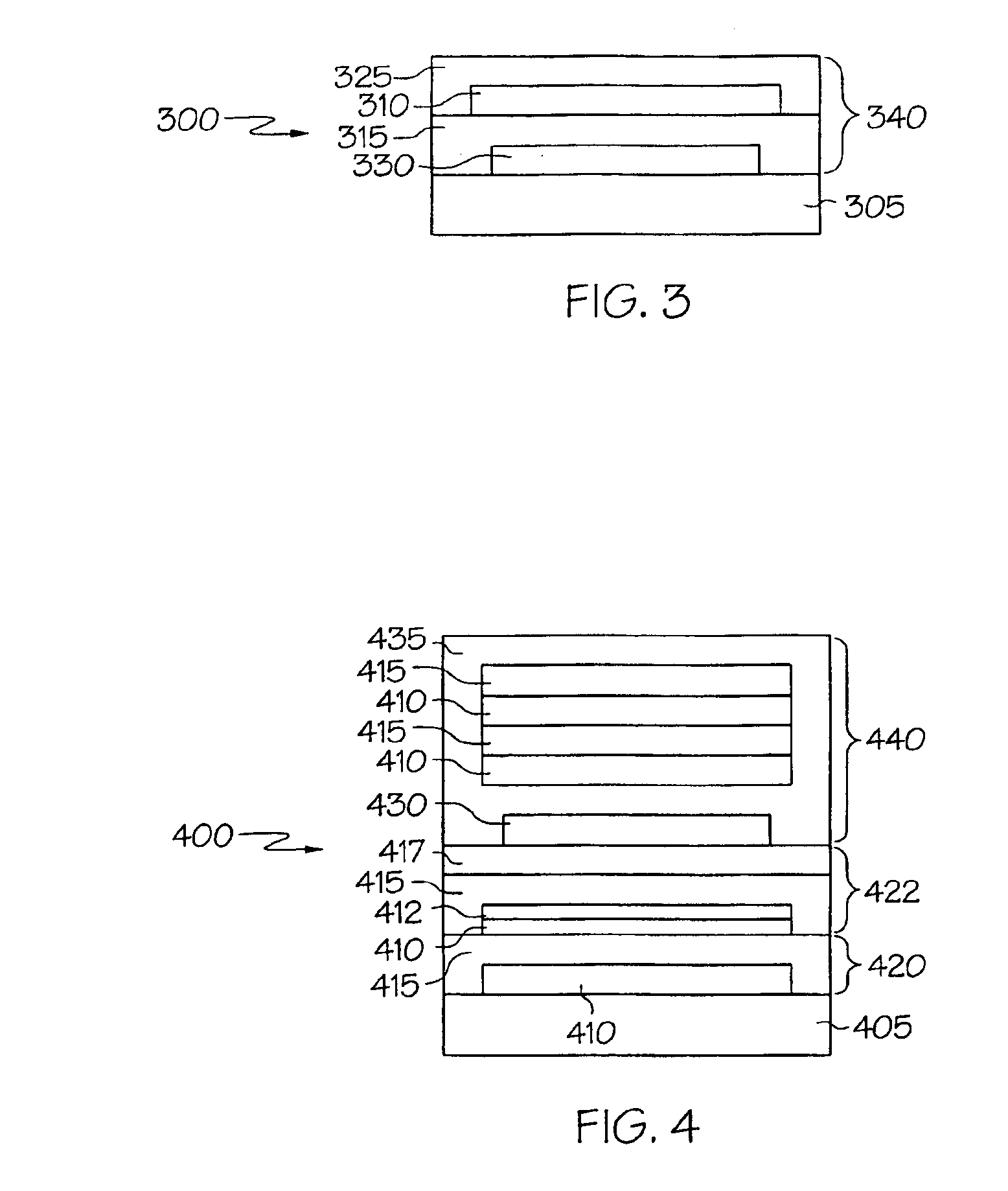Method for edge sealing barrier films
a technology of barrier films and thin films, applied in the direction of cell components, instruments, cell component details, etc., can solve the problems of reducing the area of the substrate which is usable, compromising the encapsulation, and finite lateral diffusion rate of moisture and oxygen
- Summary
- Abstract
- Description
- Claims
- Application Information
AI Technical Summary
Benefits of technology
Problems solved by technology
Method used
Image
Examples
Embodiment Construction
FIG. 2 shows one embodiment of an edge-sealed, barrier composite 200. The composite 200 includes a substrate 205. The substrate can be any suitable substrate, and can be either rigid or flexible. Suitable substrates include, but are not limited to: polymers, for example, polyethylene terephthalate (PET), polyethylene naphthalate (PEN), or high temperature polymers, such as polyether sulfone (PES), polyimides, or Transphan™ (a high glass transition temperature cyclic olefin polymer available from Lofo High Tech Film, GMBH of Weil am Rhein, Germany); metals and metal foils; paper; fabric; glass, including thin, flexible, glass sheet (for example, flexible glass sheet available from Corning Inc. under the glass code 0211. This particular thin, flexible glass sheet has a thickness of less than 0.6 mm and will bend at a radium of about 8 inches.); ceramics; semiconductors; silicon; and combinations thereof.
FIG. 2 shows three initial barrier stacks 220 adjacent to the substrate 205. The i...
PUM
| Property | Measurement | Unit |
|---|---|---|
| Area | aaaaa | aaaaa |
Abstract
Description
Claims
Application Information
 Login to View More
Login to View More - R&D
- Intellectual Property
- Life Sciences
- Materials
- Tech Scout
- Unparalleled Data Quality
- Higher Quality Content
- 60% Fewer Hallucinations
Browse by: Latest US Patents, China's latest patents, Technical Efficacy Thesaurus, Application Domain, Technology Topic, Popular Technical Reports.
© 2025 PatSnap. All rights reserved.Legal|Privacy policy|Modern Slavery Act Transparency Statement|Sitemap|About US| Contact US: help@patsnap.com



